Erg Chebbi: A Photographer's Guide to Capturing the Sahara Desert
Erg Chebbi, located in southeastern Morocco, is a photographer's paradise. With its towering dunes reaching heights of up to 150 metres, this Saharan erg offers a unique opportunity to capture the breathtaking beauty of the Sahara Desert.
Whether you're an experienced landscape photographer or just starting, this guide will provide valuable tips and insights on making the most out of your visit to Erg Chebbi. From sunrise shots to camel rides, get ready to unleash your creativity and capture the essence of this remarkable desert landscape.
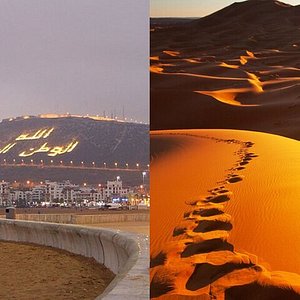
Overview of Erg Chebbi as a photographer's paradise
Erg Chebbi, located in southeastern Morocco, is a photographer's paradise. This vast expanse of golden dunes offers a magical and ever-changing landscape perfect for capturing breathtaking photographs. The dunes of Erg Chebbi are the highest in Morocco, reaching up to 150 meters in height and providing endless opportunities for unique and mesmerizing shots.
Photographers are drawn to Erg Chebbi for its stunning sunrise and sunset vistas, as the shifting dunes create a dynamic play of light and shadow. The warm, golden hues of the desert contrast beautifully with the deep blue sky, resulting in truly captivating images.
Erg Chebbi is also home to diverse wildlife, including desert foxes, lizards, and birds, providing opportunities for nature photography enthusiasts. The desert's quiet and untouched atmosphere allows photographers to capture the peaceful and serene nature of the Sahara.
To make the most of your photography adventure in Erg Chebbi, it is essential to plan your trip carefully and come prepared with the right equipment. From wide-angle lenses to capture the vastness of the dunes to sturdy tripods for stability in the sandy terrain, having the right gear is crucial for achieving stunning results.
Exploring Erg Chebbi is an adventure like no other, and with the right photography techniques and equipment, you can capture the beauty and essence of this mesmerizing desert landscape. So pack your camera bag and prepare to embark on a photography journey of a lifetime in Erg Chebbi.

Importance of capturing the beauty of the Sahara Desert
The Sahara Desert is a place of awe-inspiring natural beauty, making it a photographer's paradise. It is important to capture the essence and beauty of the Sahara Desert because it is a unique and iconic landscape with a sense of mystery and wonder. The desert offers many photographic opportunities, from vast dunes and endless horizons to stunning sunrises and sunsets.
By capturing the beauty of the Sahara Desert, photographers can transport viewers to a place of tranquillity and serenity. It allows them to experience the vastness and immensity of nature while also showcasing the delicate balance between light and shadow.
Photographs of the Sahara Desert can also raise awareness about the importance of conservation and the need to protect these fragile ecosystems. Through these images, people who may never have the chance to visit can gain a deeper appreciation for the natural world and be inspired to take action to preserve it.
When photographing the Sahara Desert, it is important to approach it with respect and a sense of responsibility. By capturing its beauty, we can immortalize its captivating landscapes and ensure that future generations can appreciate and marvel at its wonders.

Preparing for the Journey
Essential photography equipment for shooting in the desert
When venturing into the Sahara Desert, it's essential to have the right photography equipment to capture the beauty and grandeur of Erg Chebbi. Here are some essential items to consider bringing with you:
-
Camera: A DSLR or mirrorless camera with manual settings will allow you to have full control over your exposure and capture high-resolution images.
-
Lenses: Wide-angle lenses are great for capturing the vast landscapes and sweeping dunes of Erg Chebbi. Telephoto lenses will come in handy for capturing wildlife from a distance.
-
Tripod: A sturdy tripod will stabilise long exposures and allow you to capture sharp images in low-light conditions.
-
Filters: A polarizer filter will help reduce glare and enhance the colours of the sky and sand. A neutral density (ND) filter can be used to create long-exposure shots of flowing sand or capture the movement of dunes.
-
Dust Protection: Desert environments can be harsh on camera gear, so it's crucial to have protective gear such as lens hoods, lens cleaning kits, and air blowers to remove any sand or dust particles.
-
Extra Batteries and Memory Cards: The Sahara Desert can be challenging to recharge or find new memory cards, so it's wise to have extras to ensure you never miss a shot.
It's important to pack light and prepare for the unique challenges and opportunities that photographing in the desert presents. With the right gear, you'll be able to capture stunning images of Erg Chebbi's breathtaking landscapes.

Choosing the right time of day for optimal lighting
When photographing in Erg Chebbi, choosing the right time of day is essential for capturing the optimal lighting conditions. The Sahara Desert is known for its harsh sunlight, so planning your shoot around the golden hours is important - shortly after sunrise and before sunset. During these times, the sun is lower in the sky, creating a soft and warm light that enhances the textures and colours of the desert landscape.
In addition to the golden hours, you can also take advantage of the blue hour, which occurs before sunrise and after sunset. This is when the sky takes on a deep blue hue, creating a magical atmosphere and allowing you to capture stunning silhouettes against the colourful sky.
If you're interested in capturing the unique phenomenon of desert mirages, midday may be ideal, as the intense heat creates optical illusions. However, be aware that the midday sun can create harsh shadows and washed-out colours, so it's important to use proper exposure techniques and consider using filters to control the contrast.
Ultimately, the best time to shoot in the desert depends on the specific vision and effect you want to achieve in your photographs. Whether it's the soft light of sunrise or the dramatic shadows of sunset, planning your shoots around the right time of day can greatly enhance the quality and impact of your images.
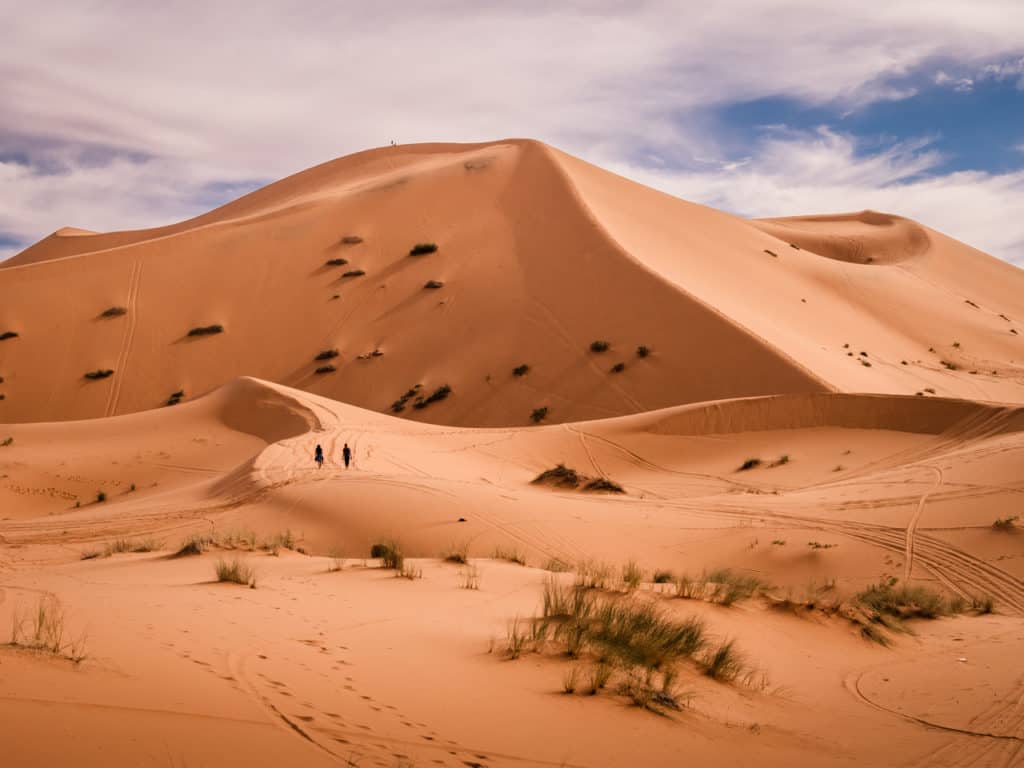
Protecting your gear from sand and dust
When photographing in the Sahara Desert, it is crucial to protect your gear from the sand and dust that can easily damage your equipment. Here are some tips to keep your gear safe:
-
Use a protective camera bag or case: Invest in a bag specifically designed to protect your gear from sand and dust. Look for bags with weatherproof and dustproof features.
-
Use lens filters: Use UV filters or protective filters on your lenses to prevent dust and sand particles from scratching the lens surface. These filters can be easily cleaned and replaced if they get dirty.
-
Use a lens hood: A lens hood can help reduce the dust and sand that comes into direct contact with your lens. It can also provide some shade and protection from harsh sunlight.
-
Keep your camera and lenses covered: When not in use, keep your camera and lenses covered with a protective covering or plastic bag to prevent dust and sand from entering the camera body or lens.
-
Clean your gear regularly: At the end of each day, take the time to clean your gear thoroughly to remove any dust or sand particles that may have accumulated. Use a blower brush or a soft cloth to remove any debris gently.
Remember, prevention is key when protecting your gear in the desert. Taking these precautions will help ensure you can capture stunning images without compromising the functionality and quality of your equipment.
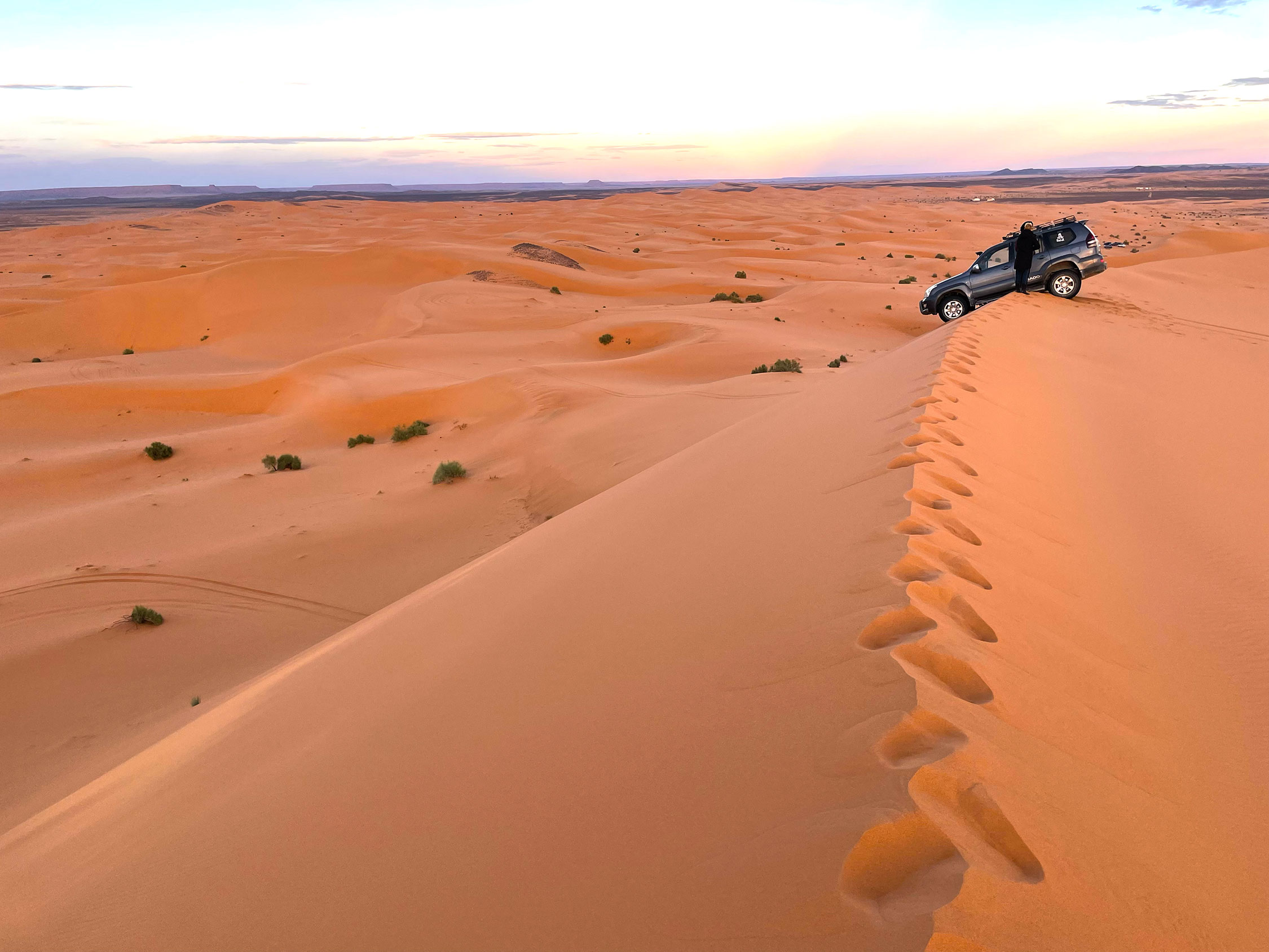
Exploring Erg Chebbi
An Overview of Erg Chebbi's breathtaking landscapes
Erg Chebbi, located in the southeastern part of Morocco, is known for its breathtaking landscapes that offer photographers a paradise for capturing the beauty of the Sahara Desert. The golden dunes stretch as far as the eye can see, creating a mesmerizing landscape perfect for photography.
The dunes of Erg Chebbi are some of the highest in the region, reaching heights of up to 150 meters. The constantly shifting sands create ever-changing patterns and textures, providing photographers endless opportunities to capture unique and stunning images.
Sunrises and sunsets at Erg Chebbi are particularly magical, as the warm light casts a golden glow on the dunes, creating a dreamlike atmosphere. The contrast between the soft shadows and the vibrant colours of the sky makes for stunning compositions.
In addition to the dunes, Erg Chebbi also boasts other breathtaking natural features, such as oasis-like areas with palm trees and small lakes, creating a diverse range of landscapes to photograph.
Whether you're a professional photographer or just starting, Erg Chebbi offers many photographic opportunities. With its unique and awe-inspiring landscapes, this desert destination should be on every photographer's bucket list.
Here are some key highlights of Erg Chebbi's landscapes:
- Vast sand dunes stretching across the horizon, offering endless opportunities for capturing the beauty of the desert.
- Oasis-like areas with palm trees and small lakes provide a striking contrast to the arid surroundings.
- The constantly shifting patterns and textures of the dunes create a dynamic and visually appealing landscape.
- Breathtaking sunrises and sunsets cast a warm and golden light over the desert, perfect for creating dramatic and enchanting photographs.
Whether you're interested in capturing the sweeping vistas, the delicate details of the sand, or the magical light of the desert, Erg Chebbi has something to offer every photographer. It's an extraordinary destination that will inspire and leave you with unforgettable images.
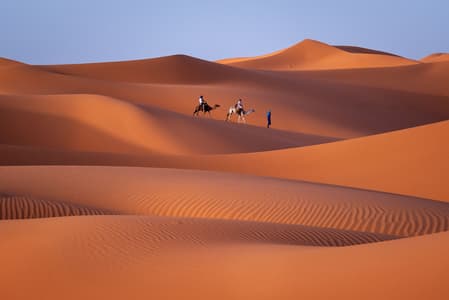
Finding the best vantage points for photography
When it comes to capturing the beauty of Erg Chebbi in the Sahara Desert, finding the best vantage points for photography is crucial. Here are some tips to help you get the most stunning shots:
-
Climb the dunes: The towering dunes in Erg Chebbi offer incredible panoramic views of the desert landscape. Find a dune that allows you to capture the vastness and beauty of the desert from a higher vantage point.
-
Explore the desert architecture: Erg Chebbi is home to traditional desert dwellings known as ksars and kasbahs. These structures provide unique vantage points for capturing the desert scenery. Look for rooftops or elevated terraces that offer a different perspective on the landscape.
-
Venture into the desert oasis: Erg Chebbi is dotted with lush green oases amidst the barren dunes. These oases provide a striking contrast to the surrounding desert and make for captivating photographic subjects. Explore the palm groves and find vantage points that allow you to capture the oasis against the backdrop of the dunes.
-
Seek out natural arches and rock formations: Erg Chebbi is known for its fascinating rock formations and natural arches carved by wind and erosion. These unique geological features offer great vantage points for framing your shots and adding depth to your compositions.
Remember to scout the area in advance, explore different angles, and experiment with different lenses and focal lengths. The desert landscape of Erg Chebbi is vast and ever-changing, so be prepared to adapt and capture its beauty from various vantage points.
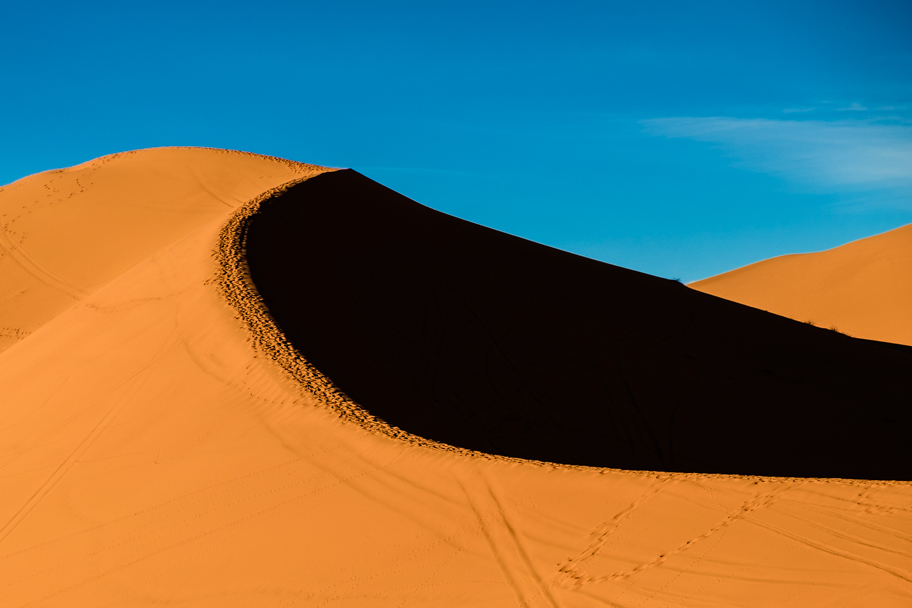
Capturing the unique textures and patterns of the sand dunes
When it comes to photographing Erg Chebbi, capturing the unique textures and patterns of the sand dunes is essential. The dunes in this area of the Sahara Desert are known for their mesmerizing shapes and intricate details, making them a captivating subject for photographers. Here are some tips to help you capture the beauty of the sand dunes:
-
Explore different angles: Experiment with different perspectives and angles to highlight the textures and lines of the sand dunes. Get low to the ground to emphasize the patterns and details in the sand.
-
Use leading lines: Look for natural lines in the sand dunes to guide the viewer's eye through the image. These lines create a sense of depth and add visual interest to your photos.
-
Play with light and shadow: The interplay of light and shadow on the dunes can create stunning contrasts and enhance the textures. Wait for the golden hour (early morning or late afternoon) when the light is softer and casts long shadows on the dunes.
-
Experiment with black and white: Consider converting your dune images to black and white to emphasize the textures and patterns. Black and white photography can add a timeless and artistic feel to your photos.
-
Pay attention to details: Focus on smaller sections of the dunes to capture the intricate patterns and textures up close. Use a macro lens or zoom in to capture fine details that might be missed with a wide-angle lens.
Remember to respect the environment and leave no trace while photographing the sand dunes.
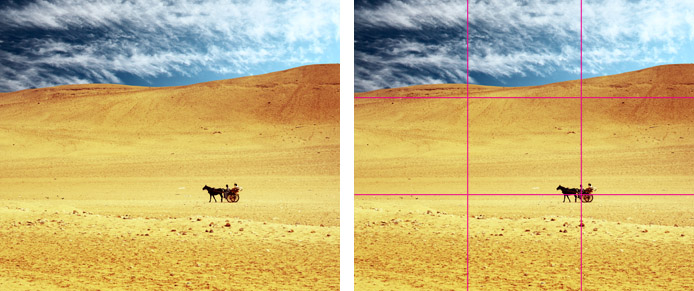
Composition Techniques
Rule of thirds and other composition rules for desert photography
When capturing stunning desert landscapes in Erg Chebbi, photographers can benefit from applying the rule of thirds and other composition rules for desert photography. The rule of thirds involves dividing the frame into a grid of nine equal sections and placing the main points of interest along these lines or at their intersections. This can create a more visually pleasing and balanced composition.
In addition to the rule of thirds, other composition rules for desert photography include leading lines and foreground interest. Leading lines, such as the curves of dunes or the tracks left by camels, can guide the viewer's eye through the image and add depth to the composition. Incorporating foreground interest, such as desert vegetation or interesting rock formations, can also enhance the composition and give a sense of scale to the vast desert landscape.
In desert photography, it's essential to pay attention to the contrast between the warm tones of the dunes and the deep blue skies or colourful sunsets. Capturing this contrast can create a visually striking image. Experimenting with different angles, perspectives, and focal lengths can help create unique and captivating compositions.
Remember to respect the desert environment and wildlife while capturing your photographs. Don't disturb or damage any natural elements; always adhere to ethical wildlife photography practices.

Utilizing leading lines and foreground interest
When photographing in the Sahara Desert, one of the key techniques to consider is utilizing leading lines and foreground interest to create depth and interest in your composition. Leading lines are elements in your photograph that guide the viewer's eye into the image and can add a sense of movement or direction. In the context of the desert, leading lines can be created by using the curves and patterns of the dunes, camel tracks, or even the edges of a camel or human silhouette.
Foreground interest refers to objects or elements placed in your composition's foreground to add visual interest and depth. This can include plants, rocks, or any other natural elements that can provide a sense of scale and context to the vastness of the desert landscape. You can create a more compelling and dynamic photograph by strategically placing these elements in the foreground.
Remember to experiment with different angles and perspectives to find your photographs' most effective leading lines and foreground interests. This will help add depth and visual appeal to your images and captivate viewers with the captivating beauty of Erg Chebbi and the Sahara Desert.
Capturing Desert Wildlife
Tips for photographing desert wildlife in Erg Chebbi
When photographing desert wildlife in Erg Chebbi, it's important to remember that the Sahara Desert is home to various unique creatures. Here are some tips to help you capture these elusive animals:
-
Research and familiarize yourself with the wildlife in the area. Knowing the behaviour and habits of the animals will increase your chances of capturing them in their natural habitat.
-
Use a telephoto lens to get close-up shots. Many desert animals are skittish and may flee if you get too close. A telephoto lens will allow you to capture them from a safe distance.
-
Be patient and observant. Desert wildlife often blend in with their surroundings, so having a keen eye and patience is important while waiting for the perfect shot.
-
Utilize natural light. The Sahara Desert offers stunning lighting conditions, especially during sunrise and sunset. Take advantage of the soft golden light to enhance your photographs.
-
Consider the composition of your shots. Incorporate elements such as leading lines, foreground interest, and negative space to add depth and interest to your images.
Remember always to respect the wildlife and their environment. Keep a safe distance and avoid disturbing their natural behaviour.

Techniques for capturing the elusive creatures of the Sahara
When photographing the elusive creatures of the Sahara in Erg Chebbi, there are a few techniques that can help you capture these majestic animals in their natural habitat:
-
Research and Preparation: Familiarize yourself with the wildlife species that are found in Erg Chebbi and their behavioral patterns. This will help you know where to find them and anticipate their movements.
-
Use a Telephoto Lens: Wildlife in the Sahara can be quite skittish, so it's important to use a telephoto lens to capture them from a distance without disturbing them. A lens with a focal length of 200mm or longer will allow you to get close-up shots without getting too close.
-
Patience and Stealth: Animals in the Sahara are accustomed to their harsh environment and are extremely alert. Approach slowly and quietly to avoid startling them and to increase your chances of capturing them in their natural behavior.
-
Timing and Lighting: Like any photography, lighting is key. The golden hour, after sunrise and before sunset, provides soft and warm lighting that adds depth and dimension to your photos. It also helps to contrast the animal and the desert landscape.
-
Respect for Wildlife: Always prioritize the well-being and safety of the animals. Keep a suitable distance and avoid disturbing their natural behaviour or habitat.
Following these techniques and being patient and respectful, you can capture stunning photographs of the elusive creatures that call Erg Chebbi home.
